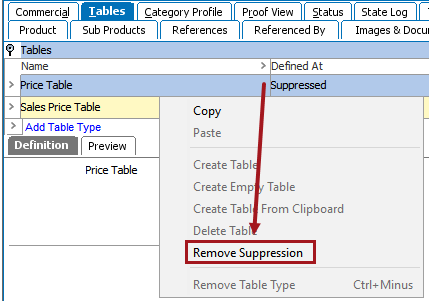This section contains information about table inheritance, how to create and remove local overrides for tables, and how to suppress and unsuppress tables.
STEP tables are based on the principle of inheritance. Just like product attributes set at a higher level in the product hierarchy are inherited by products lower in the hierarchy, tables that are linked or defined at higher levels in the product or classification hierarchy are then inherited by lower levels.
You can override the table definitions at lower levels if you need to create local variations of a table. This means that you can create a table with a default look that applies to an entire publication. You can then override that table style with a different style for specific a section of that catalog. That section can, in turn, contain a third variation of the table, and so on.
Inheritance also applies to table formatting and table transformations. Refer to the Configuring Table Formatting (here) and Table Transformations (here) topics in this guide for more information.
Table Inheritance
Before creating a table, you should consider carefully where in the product hierarchy it should be built. The creation point is important because tables are inherited downwards in the hierarchy, unless overridden by a local variation of the table.
If you plan to use your table on a large number of products, it should be defined close to the root of your product hierarchy. If you are creating a table that will only be used on a small number of product families, or only one, then select a definition point close to or on the actual product family level.
Making a Local Override
The following modifications result in an override of the inherited table style.
- Adding, changing and removing columns and rows
- Spanning or overriding cells
- Changing the graphical settings for columns, rows or cells
- Adding, changing or removing transformations
- Changing the contents of a free text type cell
Note: If you modify the layout of a table in InDesign, it does not create a local override of the table in STEP.
Overriding a table at a lower level
The following example shows a table that is created at a high level in the hierarchy, and then overridden at a lower level.
In this example, the Price Table and Sales Price Table have been created at the Products level. When you have selected the node on which the table is defined, Local displays in the Defined Atcolumn.
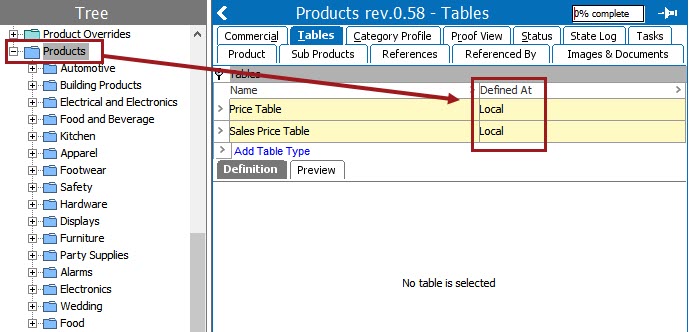
On lower levels in the hierarchy, the Defined At column displays where the tables are defined. In this example, the 'Apparel' node is selected, and 'Products' displays in Defined At.
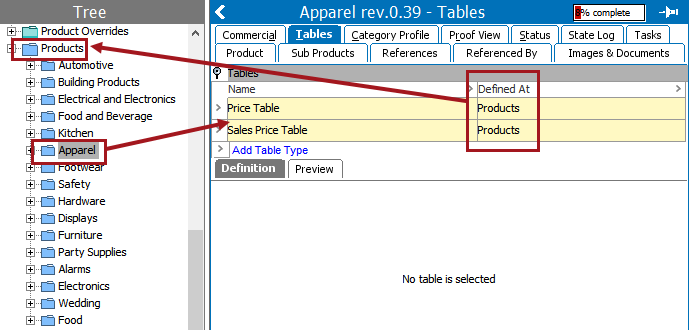
When an inherited table is changed at a lower level, a local override of the table is created. In this example, if changes are made to the table contents at the Apparel level, the table still has the same name, but the table definition is now different than the table defined at the Products level. Local is again displayed in the Defined At column, and, in turn, all products below the current level will now inherit the new table definition.
Note: Products at sibling levels still inherit the table definition from the higher level in the hierarchy.
In this example, changes have been made to the Price Table on the 'Apparel' level. Defined At now displays as Local.

Subsequently, the nodes below Apparel now inherit the version of the table built on Apparel.
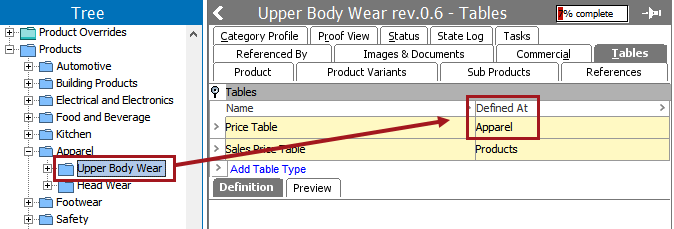
Removing a Local Table Override
A local instance of a table can be removed to return to the definition of the table inherited from a higher level. This deletion only removes the instance of the table defined at the local level; the table from the higher level remains.
- Right-click on the Local table type that you want to delete, then select Delete Table.
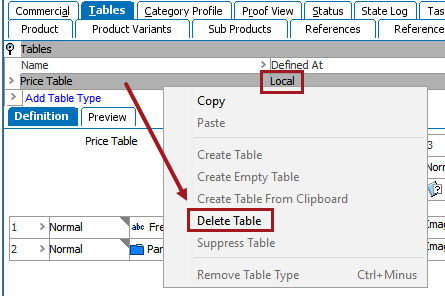
- If the table was defined locally, but the local table overrode a table inherited from a higher level, the text under the Defined At column changes from Local to the name of the node on which the table is built. Due to the inheritance, the table itself cannot be deleted; only suppressed.
Suppressing Tables
Inherited tables cannot be deleted, only suppressed. Conversely, tables that are created locally cannot be suppressed, only deleted. Refer to the Creating Tables topic here for information on how to delete tables altogether.
A table is suppressed to keep it from being output when mounted to InDesign. For example, you have created an InDesign template that has text frames for two table types and you have two tables defined on a selection of products in STEP. Not all products will need both tables included on the mounted page. Suppress the one you do not need for each product so that it will not be output to InDesign.
- Right-click on the inherited table that you want to suppress, then click Suppress Table.
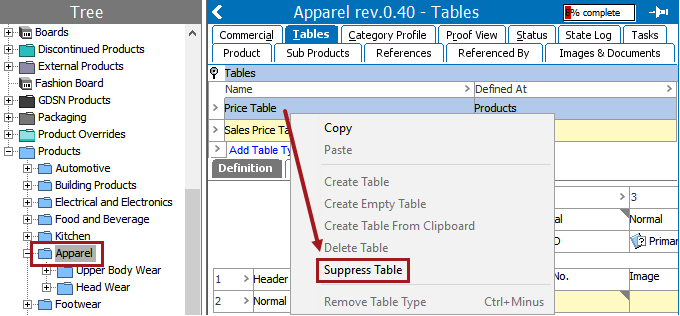
- Suppressed now displays in the Defined At column. The table can also no longer be defined or previewed; nothing will display on either the Definition or Preview tab when a suppressed table is selected.
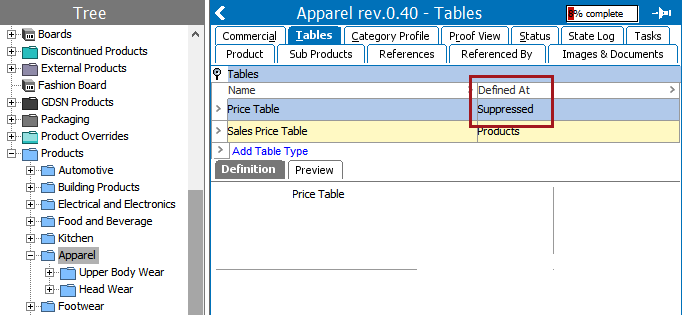
Unsuppress Tables
To unsuppress a table, right-click on the suppressed table and click Remove Suppression.
